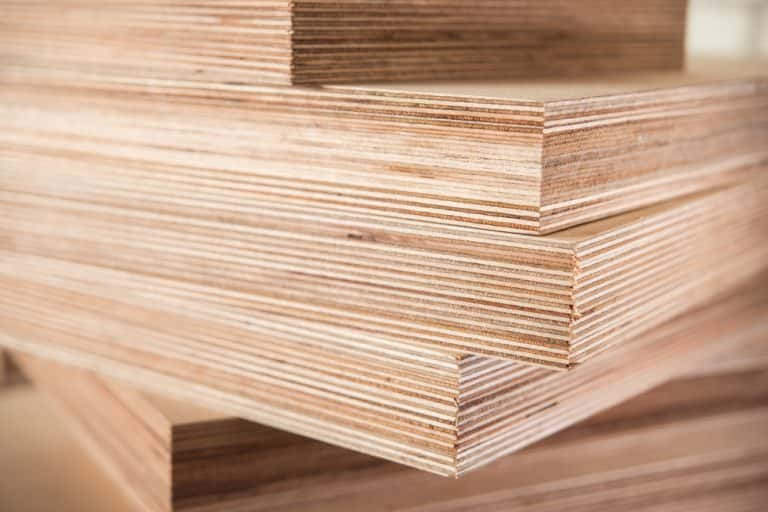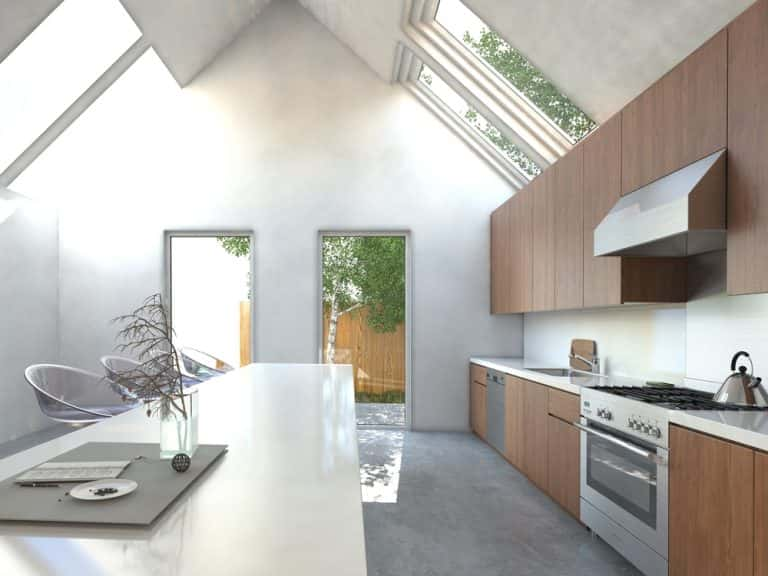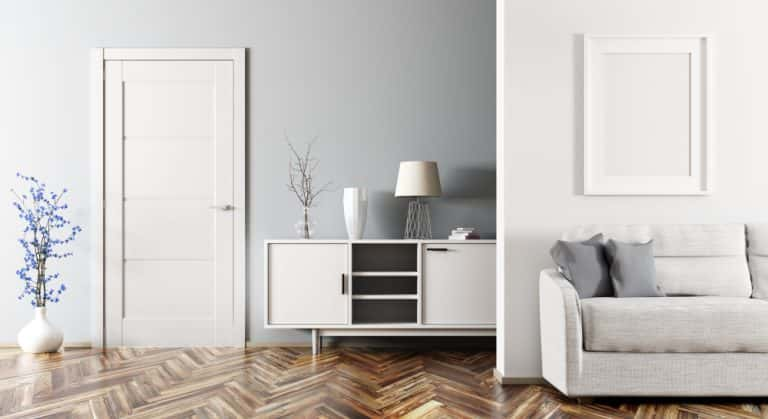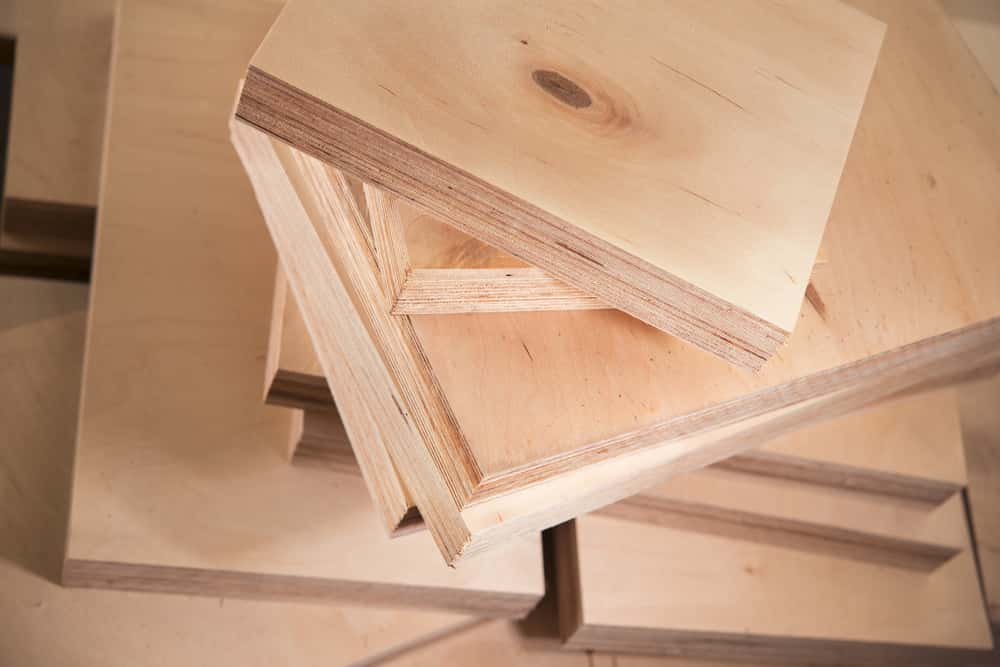Plywood is a type of engineered board made up of thin layers of wood veneer glued together. These layers of fabric are then bonded with heat and pressure. When the wood grains of alternating layers are set at right angles to one other, the result is a structure that is both sturdy and long-lasting. Both commercial-grade and waterproof plywood are widely utilised.
We will describe the differences between waterproof plywood grades and why they exist.
Waterproof Plywood: Why Should You Use It?
Waterproof plywood is used for the manufacture of furniture like bathroom cabinets that come in contact with water. Having a material made of waterproof plyboard makes it easier to clean and maintain them. They are needed in wall-mounted wardrobes in the kitchen, bathroom and shower rooms.
Waterproof plywood is often sold in 4′ x 8′ or 3′ x 7′ sheets, but custom sizes are also available. Available thicknesses are between 3 and 25 millimetres. Using plywood that has already been laminated or veneered can speed up the finishing process. Yet, such pre-finished ply boards are limited to just a few veneer or laminate options. If you want more options in terms of colour and finish, you can select the laminate or veneer independently and have the carpenter paste it on the ply.

Water Proof Plywood: Features and Benefits
-
Waterproof plywood outlasts and out-strengths MDF boards. It is reserved for high-end floor to ceiling wardrobe designs and furniture.
-
Since it is made of wood veneers stacked on top of each other, the core, front, and back faces can all be made of different materials.
-
If you cut the board in half and look at it from the side, you can see the different layers.
-
To create a strong binding, phenolic resins are utilised. Waterproof plywood resists water due to these resins.
-
The board’s cross-grain and alternating plies make it exceptionally stable in terms of size.
-
Waterproof plywood has excellent tensile strength and screw-holding power, and it holds screws securely.
-
It cannot be damaged by insects like termites or borer and will not grow mould or mildew.
-
Waterproof plywood can be made to look like genuine wood by applying veneers to its surface.
-
Edge banding tape, membrane or wooden beading should be used to seal the cut outer edges of the plywood before it is used to make shutters or boxes.
-
Unlike MDF, the core of plywood is not consistent. Therefore it cannot be carved or moulded into unique shapes.
-
Waterproof plywood is more expensive than MDF boards but less expensive than actual wood.
-
Kitchen wardrobe designs, utility rooms and bathrooms benefit from the use of waterproof plywood.
-
Waterproof plywood must be of the BWR grade, and the corresponding Indian Standard is IS:303.
Pro Tip: Exterior-grade marine-quality waterproof plywood is also available. Because of its high water resistance, it can be used in rainy environments such as outdoor patios and decks. Conversely, commercial ply is not waterproof. This is why it is so common in bedroom wardrobe designs that will not be subjected to high levels of humidity.
Where Can You Use Water Resistant Plywood in Your Home?


Water Proof Plywood: Places to Use Water Proof Plywood in Your Home
Waterproof plywood is a great material for use in a wide variety of interior applications, including countertops, walk-in wardrobe designs, ceilings and floors. Laminates, veneers or even paint can be used to give it a variety of looks to suit your personal preferences and the overall design scheme.
Waterproof plywood is a versatile building material that may be used for a variety of purposes, including shuttering, L-shaped wardrobe designs, U-shaped wardrobe designs, flush doors and dividing walls. Archidply, Century, Duro, Greenply, Mayur Plywood, Merino and Uniply are some of the most well-known brands of waterproof plywood.
Indicative prices for the most popular water proof plywood brands are:
1. Duro Waterproof Plywood Sheets (BWP)
|
Thickness (mm) |
Type |
Price in INR (per sq. feet) |
Dimension |
Price of Sheet (INR) |
|
4 |
Boiling Waterproof |
34.34 + GST |
8×4 |
1099 + GST |
|
6 |
Boiling Waterproof |
46.06 + GST |
8×4 |
1474 + GST |
|
9 |
Boiling Waterproof |
60.10 + GST |
8×4 |
1923 + GST |
|
12 |
Boiling Waterproof |
75.06 + GST |
8×4 |
2402 + GST |
|
16 |
Boiling Waterproof |
92.23 + GST |
8×4 |
2951 + GST |
|
19 |
Boiling Waterproof |
109.03 + GST |
8×4 |
3489 + GST |
|
25 |
Boiling Waterproof |
158.65 + GST |
8×4 |
5077 + GST |
2. Greenply Waterproof Plywood Sheets (BWP)
|
Thickness (mm) |
Type |
Price in INR (per sq. feet) |
Dimension |
Price of Sheet (INR) |
|
4 |
Boiling Waterproof |
38.28 + GST |
8×4 |
1225 + GST |
|
6 |
Boiling Waterproof |
45.48 + GST |
8×4 |
1455 + GST |
|
9 |
Boiling Waterproof |
54.02 + GST |
8×4 |
1729 + GST |
|
12 |
Boiling Waterproof |
67.62 + GST |
8×4 |
2164 + GST |
|
16 |
Boiling Waterproof |
84.95 + GST |
8×4 |
2718 + GST |
|
19 |
Boiling Waterproof |
96.81 + GST |
8×4 |
3098 + GST |
|
25 |
Boiling Waterproof |
147.11 + GST |
8×4 |
4708 + GST |
Using the correct adhesive for laminate bonding and edge banding is also crucial to the waterproofing strength of the modular components. Waterproof criteria, such as D3 or D4 grade water resistance, are provided by a variety of Fevicol’s speciality adhesives. Consequently, it is equally as crucial to select the appropriate adhesive to combine with the plywood you choose for your ideal home.
Conclusion
Waterproof plywood is in high demand nowadays. People are interested in it because they know how to use it and they want to get their hands on it. Waterproof plywood is an important material in gloss wardrobe designs and lacquered glass wardrobe designs. Waterproof plywood is a great way to make a shelf for small items in hanging wardrobe designs in bathrooms.
Taking care of the cabinet is also very easy. All you need to do is wipe it down with a damp cloth now and then, and it will stay as good as new. If it gets scratched, you can use sandpaper and polish it.
We hope you feel more informed about waterproof plywood and can make better decisions for your home. Get in touch with the HomeLane design crew for extra advice on material options and layout assistance.
Frequently Asked Questions
1. Which plywood is waterproof?
BWP Grade Plywood is waterproof. Marine plywood is another name for it. It doesn’t leak at all. As a 100% water proof plywood, it can be used for many different things and lasts a long time. Look for ISI marks as well. IS: 303 is for commercial or MR grade plywood, and IS: 710 is for marine or waterproof grade plywood.
2. Which is the best waterproof plywood sheet?
Bond 710 is a high-quality marine grade plywood that can stand up to boiling water. It is one of the best types of plywood and is waterproof, so you can use it for kitchen cabinets, bathroom cabinets, furniture, flooring and other woodworking projects. The best thing about Bond 710 plywood is that it doesn’t get damaged by water and has a smooth finish. This means that it won’t warp or rot even if it stays wet or humid for a long time.
3. Can you make plywood water-resistant?
Yes, you can make water proof plywood sheets. It can be done in a few different ways. One of the most common ways to do this is to paint or laminate the plywood. This will make your project waterproof, but it won’t last as long as the other option, which is to use chemicals to treat the plywood’s polymer matrix. In this plywood, this kind of treatment is known as MR.
4. How long does waterproof plywood sheets last?
When treated right, water proof plywood sheets can last for many years. But how long does watertight plywood last? It depends on what kind of plywood you buy. The truth is that all plywood will rot over time, even if you paint or seal it to keep water out. But if you treat the plywood right, it should last between 20 and 40 years.





